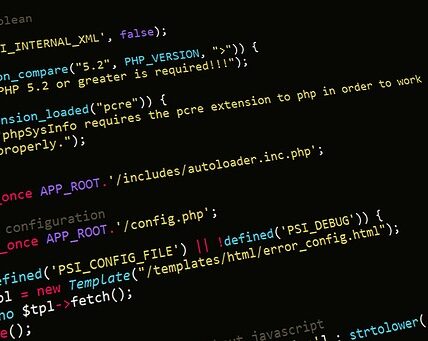When it comes to front-end development, ReactJS is a name that frequently comes up. But is ReactJS actually a framework or is it simply a JavaScript library? Is there a difference between the two? And if ReactJS is not a framework, why has it been so successful? These are the questions we will explore in this article.
Nowadays, developers have many tools available to create modern websites and applications. They have specialized libraries and powerful frameworks made up of highly cohesive components. ReactJS is one of the most popular of these development tools, but some dispute the assertion that it is an actual framework. It is important to understand the difference between JavaScript libraries and frameworks in order to evaluate ReactJS more accurately.
In this article you will find out how React works, what is the difference between ReactJS and frameworks based on it, what advantages ReactJS has over regular frameworks, and what is the sense of using ReactJS in website development. ReactJS is a complex technology, but this article will cover the basics and show you how you can benefit from using it.
We will also look at a few examples of websites made with ReactJS or frameworks built using it, so that you can get an idea of the capabilities that ReactJS offers. By the end of the article you will understand whether ReactJS is a framework or library, and you will have the knowledge to assess its real-world performance.
Definitions
ReactJS is a highly popular JavaScript library. It was created by the developers at Facebook in 2011 and is now widely used as a user interface (UI) library for building UIs and web applications. ReactJS is not a framework, but rather a library of components, tools, and methods which can be used in conjunction with other libraries or frameworks to create dynamic user interfaces. ReactJS does not dictate or impose any particular architecture or development style. Instead, developers can choose from a wide range of design choices for creating their apps. ReactJS’s strength lies in its declarative syntax which makes it easy to design and understand how a component behaves, without having to dive into the nitty-gritty details of the code. This has made it an ideal choice for developers of all skill levels, from small projects to enterprise solutions.
ReactJS is a JavaScript library for managing the DOM and building user interfaces. It is typically used for designing components, which are reusable sections of a webpage or application. With ReactJS, developers can use components to divide the UI into smaller, more manageable parts.
User Interface (UI) is the collection of on-screen elements that enable users to interact with digital products, such as websites or mobile apps. UI design requires a deep understanding of how users interact with the product and how elements of the UI can impact the user experience.
Declarative Syntax is a type of programming language which focuses on expressing problems and solutions in ways which are more closely related to human language. Declarative coding focuses on statement-based instructions, rather than long lines of code to define a certain behavior.
ReactJS has gained its popularity due to its declarative syntax and ease of use. ReactJS is highly adaptable for various types of projects, from ambitious small projects to large-scale enterprise solutions. Its wide range of components and tools makes it an ideal choice for a variety of web development tasks.
What is ReactJS
What is ReactJS?
ReactJS is an open-source JavaScript library used to create user interfaces. It is maintained by Facebook and a community of developers. It is often used as a base for single page web applications and other mobile and web-based applications. Reactjs can also be used to combine with other JavaScript frameworks or libraries in MVC based architectures.
Features of ReactJS
The main advantage of React is its ability to develop dynamic user interfaces. It simplifies the process of building an application by making the code more reusable and maintainable. This proves helpful for developers as it enables them to easily change components on the user interface without major code adjustments.
ReactJS is a component-based library which is separated into different, independent parts. This makes coding much easier and its components can be isolated for debugging as well. The code written is also more expected and remains the same for most components, making the development process more consistent. This also lets developers manage complex user interfaces easily.
How Does React Help?
The main advantage of ReactJS is that it makes developing web applications much easier. It allows developers to create interactive and responsive user interfaces. It offers a great deal of features like:
- The ability to break components down into smaller components for creating reusable elements
- A Virtual DOM, which is a tool for faster page rendering and improved performance
- Highly modular code that is easy to read and understand
- Support for both server-side and client-side rendering
- Tools for optimizing React code such as ESLint and Flow
ReactJS also enables developers to create efficient and powerful applications quickly. Its architecture makes the code highly secure and can easily be tested, which reduces the overhead of debugging applications. It also has a component-based API, which makes coding simpler and more efficient.
In addition, React supports a variety of tools such as React Native for developing mobile apps. It can also be integrated into existing web and mobile apps for creating better user interfaces. Finally, React is open-source, which means that it is continually updated by the community, enabling developers to use the latest and best features available.
Benefits of ReactJS
ReactJS is a JavaScript library, not a framework. It is a popular open source JavaScript library developed at Facebook, and is often used for developing user interfaces and single-page applications. ReactJS has been gaining a lot of traction across the software development industry, as it can help developers quickly create high-quality apps with minimal effort.
Powerful Component Model
One of the important features of ReactJS is its component-based approach to developing applications. A large number of reusable components can be developed which can be easily integrated into a larger project. Each component contains a particular logic that is developed independently. Thanks to the component-based approach, developers can create a large number of high-quality applications or websites. ReactJS components are self-contained, and their functionality can be tested independently.
Virtual DOM
The Virtual DOM is a feature of ReactJS which allows for efficient updates and changes to the documents without requiring a full page reload. This makes ReactJS websites faster and more efficient. A virtual DOM is a lightweight copy of the real DOM, which is updated after every change. This means that the Virtual DOM is always up to date with the current state of the application. This helps to ensure that the website or application is always running smoothly.
Simplifies Maintenance
Another advantage of ReactJS is that it simplifies maintenance. By making use of the component-based approach described above, ReactJS makes it easy for developers to update applications without worrying about breaking other aspects of the application. Furthermore, since ReactJS components are self-contained, any changes to a particular part of the application can be made without impacting other parts. This helps to reduce the time spent on debugging and testing.
Finally, ReactJS helps developers create a cleaner and more intuitive codebase. By utilizing the Redux library, the codebase can be organized and maintained in a simple and understandable way. This makes it easier for developers to maintain and update complex applications, and helps to reduce the risk of errors or bugs.
In conclusion, ReactJS is a powerful and efficient JavaScript library that offers a number of advantages over frameworks. Its component-based architecture, virtual DOM, and simplified maintenance make ReactJS an attractive option for developers looking to quickly build high-quality applications and websites.
Drawbacks of ReactJS
ReactJS is a JavaScript library, not a framework. It is an innovative open-source project developed by Facebook and has quickly become the preferred library for a wide range of web and mobile application development projects. ReactJS is based on the concept of declarative programming which makes it easier for developers to create intuitive and attractive user interfaces (UIs).
Limitations of ReactJS
One of the main drawbacks of ReactJS is that you can’t use it for mobile applications. ReactJS works with the JavaScript library, so developing mobile applications is a limitation of the library The other limitation of ReactJS is the difficulty caused by JSX. JSX allows developers to create React components using HTML-like syntax, but many developers find the syntax difficult to learn and use. It also adds another layer of complexity which can make debugging and development harder.
Difficulty of Learning
ReactJS can be complex to learn and use, especially for developers who are just getting started. The library is based around the concept of creating reusable components, which can make understanding the library difficult for novice developers. ReactJS also has a steep learning curve and developers will need to spend a lot of time understanding the concepts and architecture of the library. Additionally, the JSX syntax can be hard to learn and use, as it requires developers to think in terms of components rather than HTML.
Finally, ReactJS requires developers to build a lot of their own components. This can be difficult for novice developers, as it means they will need to take on a larger role when developing web applications. Additionally, ReactJS does not provide many features out of the box, meaning developers will need to build more of the application from scratch. This can be difficult for developers who are just getting started and don’t have a strong understanding of the library.
Conclusion
The debate among developers over whether ReactJS is a framework or simply a library has struck up intense controversy in the tech world. Does the term “ReactJS” refer to a full-fledged framework or a mere library? This thought-provoking question lingers in the minds of many as they dive into learning ReactJS.
Although there is no definitive answer to the question of whether ReactJS is a framework or not, developers have found great success in using it for their web development projects. As the technology continues to evolve, we can look forward to exciting new releases to come! Be sure to follow our blog to stay up to date with the latest ReactJS news and developments.
FAQs:
Q: What is ReactJS? A: ReactJS is a JavaScript library for building user interfaces, developed and maintained by Facebook. It’s a great tool for creating interactive web applications.
Q: Is ReactJS a framework? A: The debate is still ongoing – some believe ReactJS is a framework, while others think it has all the hallmarks of a library. It’s up to you to decide.
Q: Is ReactJS hard to learn? A: ReactJS is considered by many to be a relatively easy language to pick up. With a few hours of practice and patience, most users can gain a good grasp of the basics.
Q: What is ReactJS used for? A: ReactJS can be used to create single-page web applications. It’s a great tool for developing mobile-friendly and high-performing applications.
Q: What technology is used to develop ReactJS? A: ReactJS is developed using JavaScript and various related frameworks such as Redux and GraphQL. It is also compatible with various HTML and CSS languages.




